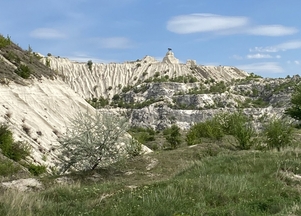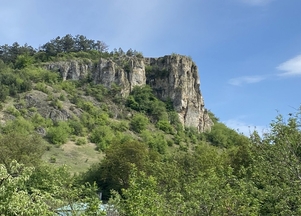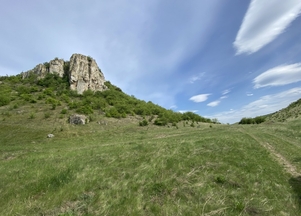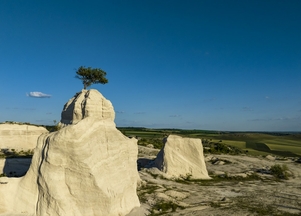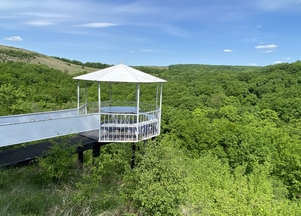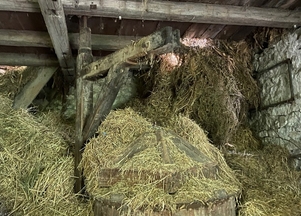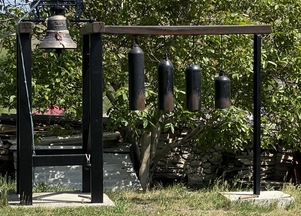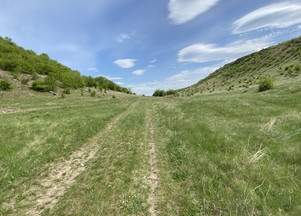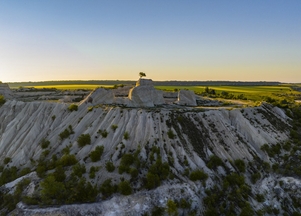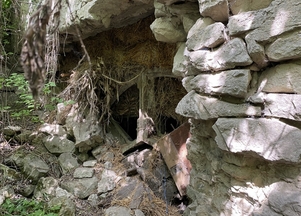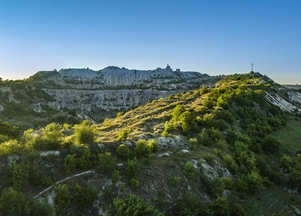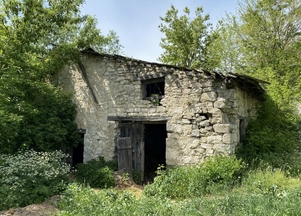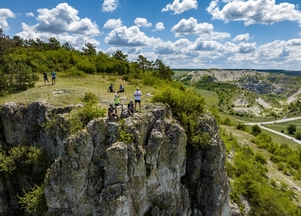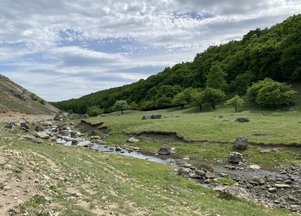Fetești
History
The village of Fetești is one of the oldest villages in Edineți district. According to documents it appears at the end of the 15th - beginning of the 16th century, which corresponds to the testimonies of the oldest inhabitants (testimonies made in 1942). This territory has been populated since the time of Stephen the Great.
The question of the village's establishment and the history of its development was the subject of debate in legal proceedings in the 1820s-40s. The lawsuit was brought to court by the former owners of the village and the state in order to determine the owner of the estate. It was necessary to answer the question: did Fetești bear the name of Hrițeni or not? The court, denying this fact, would pass the village into the possession of the state. But historical documents indicate otherwise. Public records from 16th-17th, along with court documents reveal the following:
The village is located on the territory of Hotin county;
It is defined as an integral estate with the village of Vicicăuți (Trinca), and a number of villages in Hotin county (today on the territory of Briceni district or in Chernivtsi region).
Thus we can say that the old name of the village is Hrițeni and only towards the end of the 18th - beginning of the 19th century the name Fetești appears.
By a decree of Petru Voda on July 3, 1575 the village of Hriteni with a mill is passed to Odochia, daughter of Luca Arbore, gatekeeper of Suceava. So previously the village had belonged to Luca Arbore, member of the Royal Court, beheaded in 1523 by Stephen the Younger.
The following documents refer to the 17th century, when the village passes into the possession of the Ponici family and its descendants.
6 April 1606 - a deed signed by Erimia Movilă to Dumitru Ponici for half of Hrițeni.
3 November 1621 - a deed from Radu I Mihnea to deacon Ponici for a number of villages in Hotin County, including half of the village of Hriteni. The deed is given in connection with the plundering of Ponici's house, as these documents were taken by thieves during the heist.
April 30, 1635 - a deed from Vasile Lupu to deacon Ponici for half of the village Hriteni in Hotin county.
Then the village of Hriteni appears in the census of 1772-1774. According to these data there were 40 inhabited houses and 5 deserted houses in the village, 45 men and a priest. However, there were names of only 23 people.
The following families establish themselves here during this period: Gribință, Movilă, Furtună, Ursul, Ocrain, Roșca, Budeanu, Traistă, Baltă, Leurdă. Some settlers are identified by first name and occupation, i.e. Petre the Miller, Istrate the Shoemaker, Gigoraș the Stitcher, Simion the Bootmaker, etc. The owner is Apostol Holubei who receives these estates (Hrițeni and Sficicăuți/Trinca) following his marriage to Maria Dohateu, Ponici's great-granddaughter.
Their daughter - Parascovia Golubeva - filed the lawsuit in 1846. Other landowners were also involved in the proceedings, such as the State Councillor Crupenschi, Captain Gavril Stroici.
This process, which lasted for more than 20 years, has brought enough hardship and damage to the whole village. In 1815 the Supreme Council of Bessarabia and the Court of Justice decided to allocate half of the village to Ionita Grigorei. The latter, being an Austrian subject, lived beyond the borders of Bessarabia and leased the estate to Nicolae Procopici. The new owner cut down about 20 thousand large trees without having the right to do so. As a result, Stroescu files a complaint with the Hotin County Court. The court case takes a new turn. Numerous documents were brought in (decree of expropriation, fortification, etc.) from 1606 onwards, which restored the Ponici family tree and the testimonies of the village elders. The latter also claimed that the village of Fetești had previously been called Hrițeni.
Ignoring, however, any documentary material, testimonies, judgments of the Hotin County Court, the Supreme Court of Bessarabia denies the right of ownership to Ponici's descendants, citing as reason the lack of the name of Hrițeni on the territory of the county Hotin at that time.
In fact, it is a natural consequence of the treaty of 1812, when the population and the nobility of Moldavia broke in two. Any question concerning the land holdings in Bessarabia of the Moldovan nobles was examined by the Moldavian Divan and a special committee in Iasi, but their decisions did not come into force without the approval of the Russian General Council in Iasi. The latter strictly guarded the rights and interests of the Russian Empire. As a rule, the examination of disputes ended with decisions identical to the one in the case of Hriţeni – Feteşti village.
In the 19th century the village belonged to Gavril Stroici Scordeli, the merchant Shimon Caufman, and to a group of free peasants.
In 1904 it is attested as "the old Romanian village of the "răzeși" (free peasants). It has 280 houses, 1872 souls, church"
At this time the peasants had 270 heads of cattle, 107 horses. In the first decade of the 20th century, a 4-year school was opened. On average, the number of pupils per year reached 40. Lessons were held by the village priest Gheorghe Balabanov, then by Pavel Barbos and teacher Popovici.
It was a difficult period, with changes of political regime and power, a period with few written documents, but with many sufferings embedded in the soul and destiny of the simple peasant.
The year of 1942 provides a broader picture.
In 1942, Fetești is the centre of the commune of 2 villages: Fetești and Gordinești. The ethnic population of the commune is 4656 Romanians, 335 Ukrainians, 27 Russians, 6 Poles, 5 Germans. There are 2 churches, 3 primary schools and a Cultural Centre.
The Ministry of Agriculture and Domains has set up a horse breeding farm in the commune of Fetești. The commune has a total of 616 horses, 1095 cattle, 3461 sheep and 1389 pigs. The agricultural inventory contained: ploughs - 376, harrows - 343, sowing machines - 12, cultivators - 44, tiller - 9, agricultural tractors - 10, etc.
These were the basic elements with which Fetești entered a new period: war, famine, deportations, collectivisation, socialism.
Legend
Have you heard of Draghiște? If not, then come to Fetești and see for yourself. It is said to be the only stream in the world named after love.
But if anyone has been there even once, then you should know that the valley, which starts from the cliffs of Burlănești to the mouth of the forest was once called Hriteni, and the village that was located a little further downstream from the present village was also called Hriteni. Hard working people and good housekeepers lived there. But above all the village boasted its youth - lads and lass. One of the lads was a real "Prince Charming''. And as is the custom for boys and girls, during spring they set off in pairs to the forest to admire nature and pick flowers. But Prince Charming used to walk alone. And as he was walking along the valley of the Draghiște stream, he saw a girl on a hillside of the forest, who was picking flowers. He was drawn towards her. When he looked, he saw that the girl was so beautiful that you could look at the sun, but not at her. They exchanged a few words. He talked about this and that. More dates followed. After a while they couldn't resist any longer and decided to start a family. The girl's mother, who was from another village, Trinca (then Vicicăuți), could not allow her daughter to get married in another village. But what could she do? Love is not what you want. They got married. Her mother always brought all kinds of goods to her girl's home in Fetești.
Whoever met her asked her: "Where are you going, Auntie?" She would answer them all: "Don't you know? I'm going to my daughter's house in Hrițeni". Slowly, the name of Fetica (which means "my little girl"), evolved into the name Fetești, as people preferred this name to the old one.
Even today, the valley where Draghiște comes out of the forest is called "Gura Hrițeniulor". The people who live in this part of the village are called hrițeneni (hrițeneni neighbourhood).
It is not known what the original name of the stream was, but the name Draghiște comes from that beginning of love between the two lovers. And if it's Fetești, that means there are girls here, and beautiful ones, too.
To check if this is true, come to Fetești and see with your own eyes.
Beautiful places
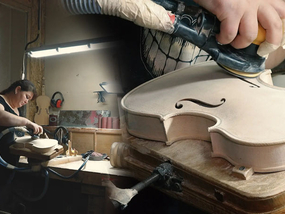
Violin factory
The musical instrument factory in Fetești was established on the basis of a partnership between the local authorities and the Romanian entrepreneur Vasile Gliga, who invested over 100 thousand euros in this workshop. Thirty years ago, Vasile Gliga and his wife set up a violin factory in Reghin, Romania.
Read more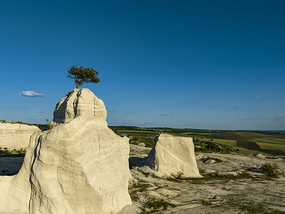
Fetești Gorge - "Little Switzerland"
Surrounded and watched over by the old guardians of the Republic of Moldova - the Prut Cliffs, is a small, hidden corner of heaven, "Moldovan Switzerland".
Read moreFigures
Eșanu Andrei, architect. Born on 7 July 1949 in the village of Fetești, in a peasant family with 5 children, him being the youngest.
He studied at the Polytechnic Institute "Sergei Lazo", Faculty of Architecture. He has been a Member of the Union of Architects of the USSR since 1980, Member of the Union of Architects of St. Petersburg since 2006. Awarded the medal "For Distinguished Work" by the Decree of the Presidium of the Supreme Soviet of the USSR of 19.03.1981. Worked in "MoldGiproStroy", Chisinau, and since 2005 in St. Petersburg (Russia).
Video presentation
In the following video presentation, you will be invited to discover the beauty of the banks of the Prut River in the Republic of Moldova. This picturesque area is known for its idyllic landscapes, where the river Prut flows quietly through the hills


 ro
ro
 ru
ru

